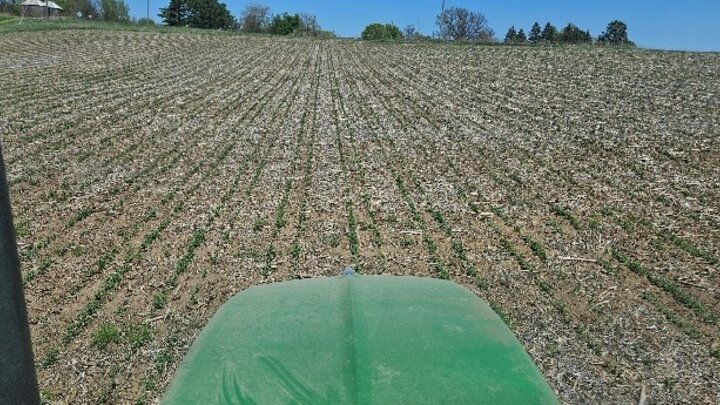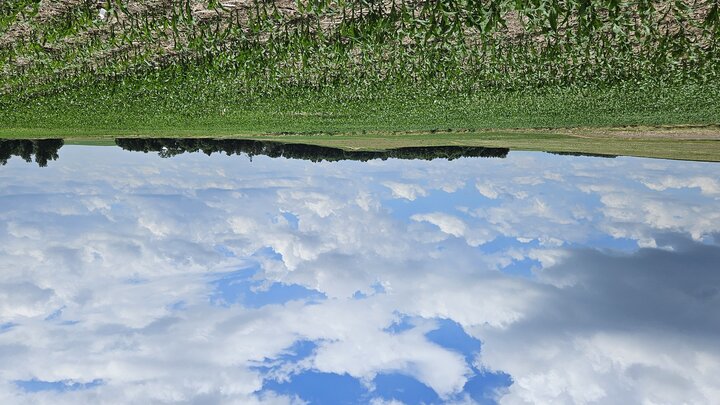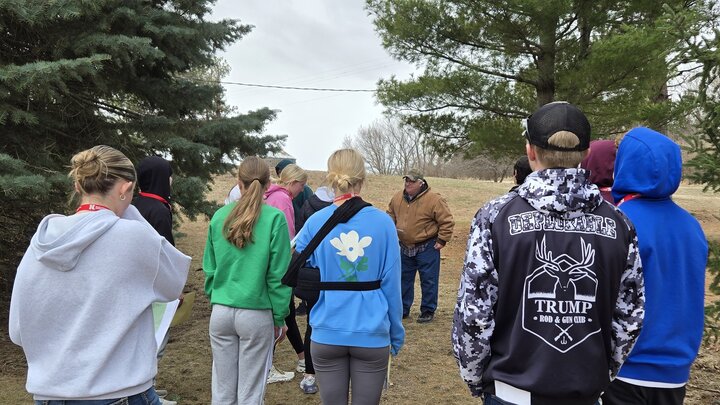This year at the Haskell Agricultural Laboratory, we have added a Winter Pea Demonstration to our lineup of projects for 2025. Austrian Winter Peas (Pisum sativum), also known as field peas, are widely used as a cool season cover crop. Due to their ability to fix nitrogen in the soil, they are often used after harvest of silage, soybean or wheat. In Northeast Nebraska (USDA Growing Zone 5B), it’s not guaranteed they will overwinter in our area, typically doing better in Zone 6 and above. As a result, there is a limited window these plants can grow in the fall, especially after late harvests.
In mild winter conditions, winter peas will continue to grow after planting until temperatures drop, creating biomass and ground cover. As winter approaches the plants go dormant above ground but can still be active beneath the soil fixing nitrogen. Once spring comes the winter peas will continue growing until they are terminated so the main crop can be planted.
While planting winter peas offers clear benefits, it’s also important to keep a few drawbacks in mind. Fall is often a busy time with harvest, which can make timely cover crop planting difficult. Additionally, cover crops like winter peas use moisture that may be necessary for the primary crop, especially on dryland soil. One alternative is to plant winter peas in the spring.
There are many ways to plant winter peas, including broadcast or drilling. Broadcasting is a quick method that can be done by using a cyclone spreader, drone, or helicopter. However, one drawback to this is less seed to soil contact, which often requires a higher seeding rate to compensate. A way to improve the seed to soil contact is to drill them. This can be done by using a drill, planter or interseeder. When drilled it is common to use 30 - 60 lbs. per acre and 50 – 70 lbs. per acre for broadcast spread. For Austrian Winter Peas there are approximately 4,000 seeds per pound.
Planting winter peas in the spring allows you to better utilize the down time prior to planting corn. One advantage of planting the peas in the spring is avoiding the risk of winter kill and allowing them to grow until it is time to terminate them. Their growth can also help with weed suppression by creating cover over the soil surface. When it is time to terminate you can spray a pre-emergent herbicide. Timing termination can be tricky, but it’s becoming more common to allow the peas to continue growing even after planting the main crop and then terminating them post-planting. This practice is called “planting green”.
Planting green gives the peas more time to fix nitrogen, create more biomass and soil cover, while allowing the corn to get started for the season. However, deciding when to terminate the peas can be challenging. To help identify the ideal termination timing, the Haskell Agricultural Laboratory has been planted a demonstration to get a better idea of this practice.
Using an 8-row 1705 John Deere planter, we planted the winter peas on March 28th. Although the planter was equipped with soybean plates, which aren’t specifically designed for winter peas, we made adjustments to achieve the desired planting depth and population. Our target was 280,000 to 300,000 seeds per acre. Once the planter was set up, we started planting the first pass with the planter set at -140,000 to 150,000 seeds per acre.
To establish soil cover more quickly, we decided to plant two rows of winter peas spaced 10” apart. This allowed us to leave a 20-inch gap between paired rows, providing a blank row for the corn (see Image 1). Using a John Deere Starfire 6000 with RTK we were able to precisely plant the rows with 10” spacing. In the end we planted 240’ x 800’ using this method.
Due to cooler temperatures early this spring, we did not observe significant growth until the last week of April. On May 5th, we planted the corn and terminated the first pass. The first pass represents pre-plant termination. Each termination pass was 60’ x 800’ allowing us to have 4 different termination dates. After a couple weeks of rain, we were able to spray the second pass May 23rd. By this time the corn was around the V2 growth stage. The third termination date was done May 30th around the V4 corn growth stage.
The final termination date is set to be around the V6 corn growth stage. To better understand the impact of the winter peas, soil samples were taken prior to the planting and at each termination date. Additionally, there will be a 20’ strip not terminated to see how the winter peas compete with the growing corn.
Because winter peas are a cool season cover crops their growth typically slows as the warmer summer temperature approaches. Once the corn reaches maturity, yield data will be collected for each of the termination times and reported. As this demonstration continues, we look forward to seeing how the peas perform in our region and sharing what we learn with you.
by Michael Kurtzhals
June 18, 2025

Winter pea rows were planted 10" apart to allow a 20" gap for the corn row. Image was taken at first termination prior to corn planting
Michael Kurtzhals

